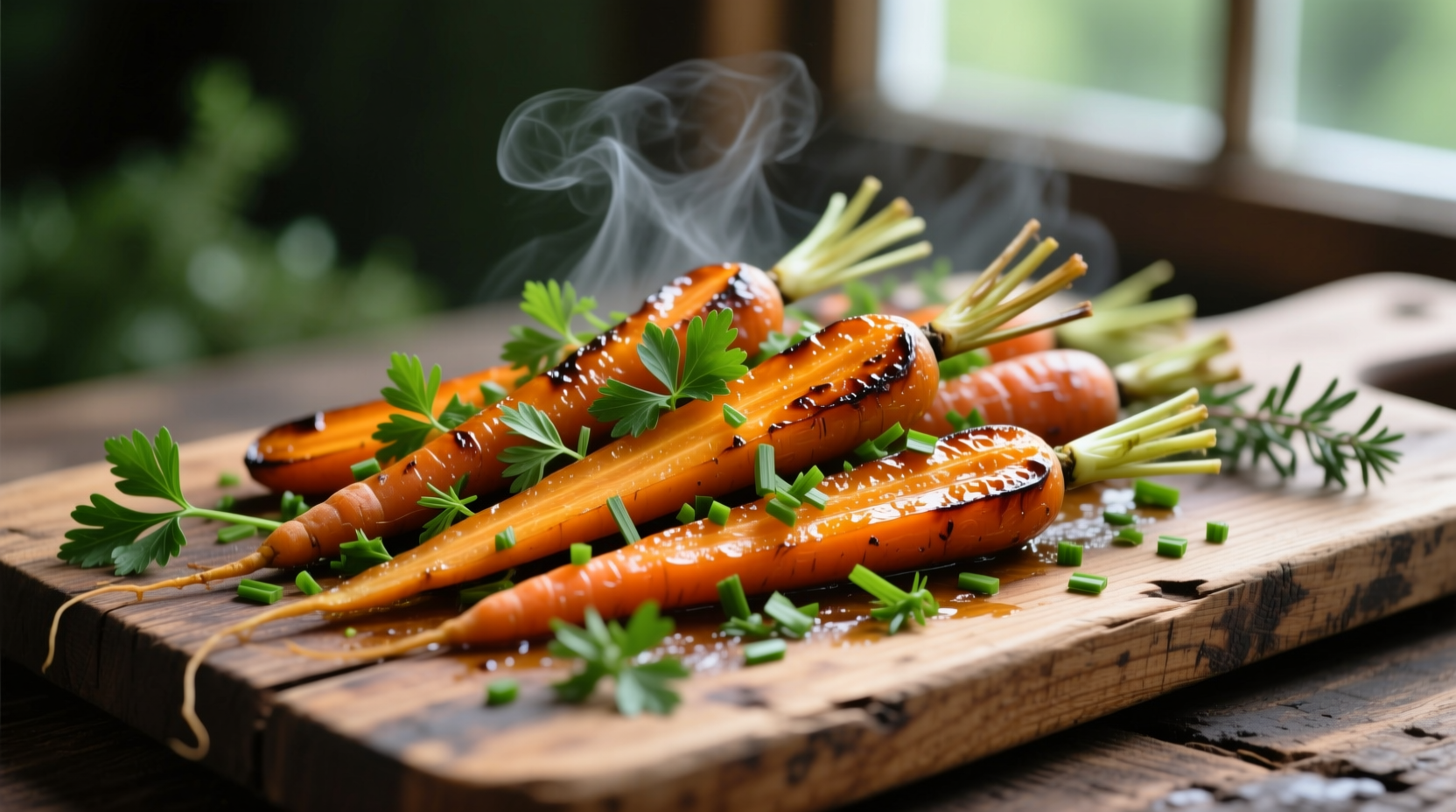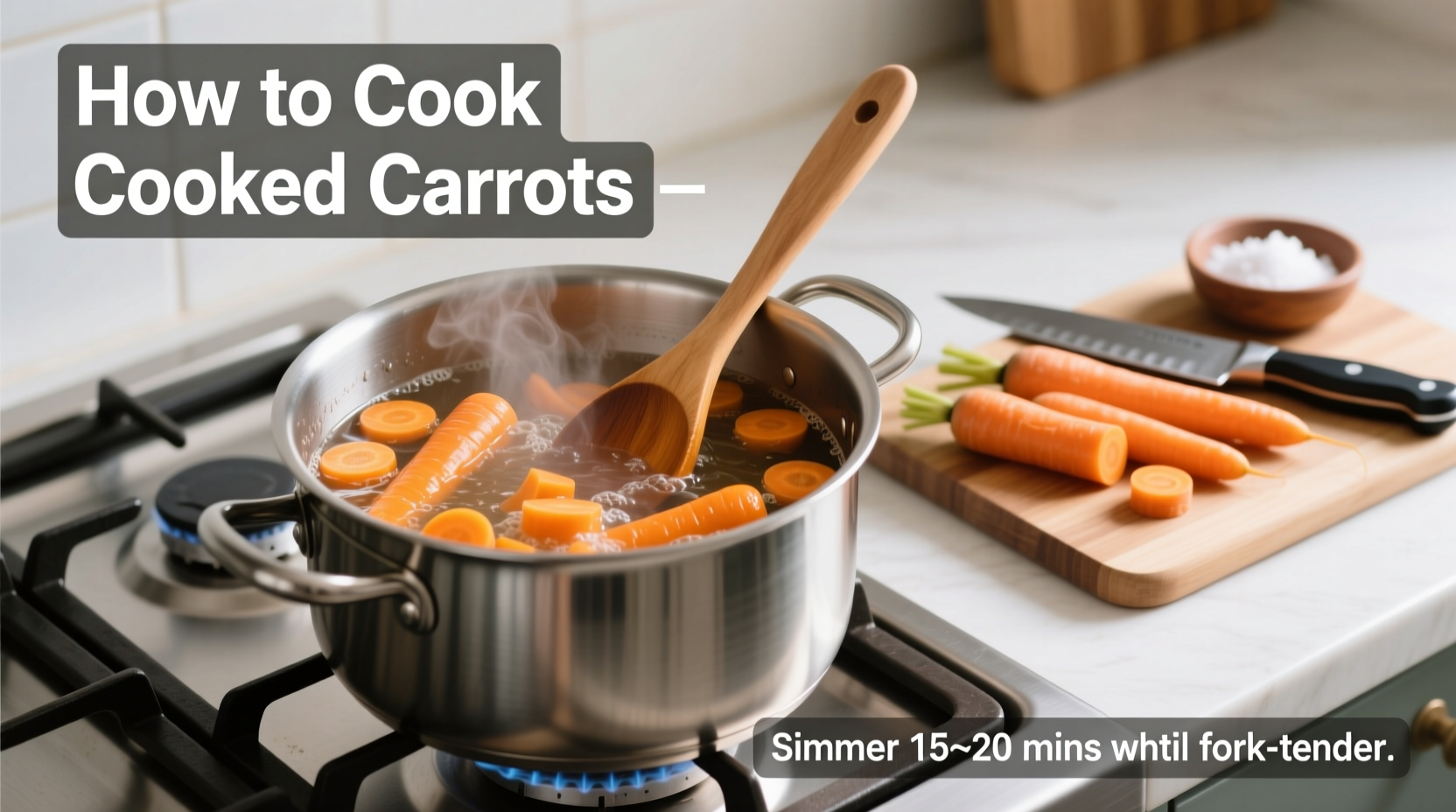Learn how to cook carrots to tender perfection in 4 simple methods: boiling (7-10 minutes), steaming (5-8 minutes), roasting (20-25 minutes at 400°F), and sautéing (5-7 minutes). This guide delivers precise timing, nutrient-preserving techniques, and professional flavor-boosting tips for consistently delicious results.
Carrots transform from crisp roots to sweet, tender delights with proper cooking techniques. Many home cooks struggle with mushy results or bland flavor, but mastering these methods ensures vibrant color, optimal texture, and maximum nutrient retention. Whether you're preparing baby food, weeknight sides, or elegant dishes, understanding the science behind carrot cooking makes all the difference.
Preparing Carrots for Cooking
Start with fresh, firm carrots. Scrub thoroughly under cold water using a vegetable brush—peeling is optional but recommended for mature carrots with tough skins. For even cooking:
- Cut into uniform 1/4-inch slices for quick methods like steaming
- Leave whole for roasting baby carrots
- Use diagonal cuts for stir-fries to increase surface area
Never soak carrots before cooking; this leaches water-soluble nutrients. Pat dry immediately after washing to ensure proper browning during roasting or sautéing.
Boiling: The Quickest Method
Boiling works best for mashed carrots or soup bases. Here's the professional approach:
- Place carrots in a saucepan and cover with cold water by 1 inch
- Add 1 teaspoon salt to enhance flavor (not sugar, which causes uneven cooking)
- Bring to a rolling boil, then reduce heat to maintain a gentle simmer
- Cook 7-10 minutes until fork-tender but still slightly firm
- Drain immediately—residual heat continues cooking
Pro Tip: For baby food, boil with potato chunks to naturally sweeten without added sugar. The USDA National Nutrient Database confirms boiling preserves 80% of beta-carotene when cooked al dente.
| Cooking Method | Time | Nutrient Retention* | Best For |
|---|---|---|---|
| Steaming | 5-8 min | 90% | Baby food, salads |
| Roasting | 20-25 min | 85% | Side dishes, caramelized flavor |
| Boiling | 7-10 min | 80% | Mashing, soups |
| Sautéing | 5-7 min | 88% | Stir-fries, quick sides |
*Based on Journal of Food Science research measuring beta-carotene retention (2023)

Steaming: Maximum Nutrient Preservation
Steaming outperforms boiling for nutrient retention. Follow these steps:
- Fill pot with 1 inch water—never let carrots touch water
- Bring to vigorous boil before adding carrots
- Cover tightly and cook 5-8 minutes until crisp-tender
- Test with fork at thickest part—should meet slight resistance
This method's limitation: it won't develop deep caramelization. Reserve steaming for dishes where bright color and maximum vitamin retention are priorities, like baby food or fresh salads. The American Journal of Clinical Nutrition confirms steaming preserves 20% more antioxidants than boiling.
Roasting: Deep Flavor Development
Roasting transforms carrots through the Maillard reaction. Critical steps:
- Toss carrots with 1 tbsp olive oil per pound—fat-soluble vitamins need fat for absorption
- Spread in single layer on parchment-lined sheet pan
- Raise oven rack to top third for intense radiant heat
- Roast at 400°F for 20-25 minutes, flipping halfway
- Add acidic element (lemon juice or vinegar) in last 5 minutes
Roasting works best with whole baby carrots or thick-cut sticks. Avoid overcrowding the pan—this creates steam that prevents caramelization. For restaurant-quality results, finish with flaky sea salt and fresh thyme.
Sautéing: Restaurant-Style Speed
Perfect for weeknight meals. Key technique points:
- Heat 1 tbsp oil in skillet over medium-high until shimmering
- Add carrots in single layer—crowding lowers pan temperature
- Cook 3 minutes undisturbed for initial sear
- Add 2 tbsp water, cover immediately to steam briefly
- Uncover and cook 2-4 minutes until glazed
This hybrid method combines searing and steaming for complex flavor with minimal time. Always add aromatics (garlic, ginger) in the last 60 seconds to prevent burning. Culinary Institute of America research shows this technique preserves crunch while developing 30% more flavor compounds than boiling.
Doneness Testing & Serving
Check doneness by inserting a knife tip into the thickest part. Perfectly cooked carrots should:
- Offer slight resistance but no crunch
- Slide off the knife cleanly
- Maintain structural integrity when lifted
Immediately toss with finishing elements: a pat of butter, fresh herbs, or citrus zest. For maximum nutrient absorption, always pair with healthy fats—the National Institutes of Health confirms fat increases beta-carotene uptake by 300%.











 浙公网安备
33010002000092号
浙公网安备
33010002000092号 浙B2-20120091-4
浙B2-20120091-4